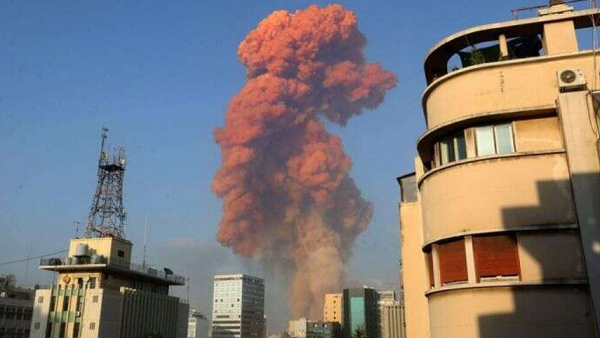
Ghana: EPA issues directive on storage of ammonium nitrate
Ghana's Environmental Protection Action (EPA) has directed that all ammonium nitrate being stored in the country must be kept away from fuels and sources of heat.
The EPA in a public notice explained that this is because ammonium nitrate "typically doesn't detonate on its own and requires another ignition source".
Advertisement
"We wish to further state that ammonium nitrate in Ghana is used both as a fertilizer for farming and as an industrial chemical, especially in mining operations. We, therefore, direct that Ammonium Nitrate must be kept away from fuels and sources of heat," the notice said.
"The Agency directs all concerned in the storage, handling and use of ammonium nitrate, to ensure that all safety requirements and protocols are strictly adhered to and the general public is advised to keep away from such storage areas".
Audit
The EPA also assured that it has taken immediate steps to ensure that all known designated storage areas of ammonium nitrate in Ghana are audited to ensure that safety and stringent storage practices are enhanced.
Lebanese explosion
The directive comes on the heels of a deadly August 4 explosion in Beirut, Lebanon which is said to have been caused by ammonium nitrate.
The blast, which shook the whole city, killed at least 113 people and injured more than 4,000 others. A two-week state of emergency was also declared in the country.
Lebanese President Michel Aoun said the blast was caused by 2,750 tonnes of ammonium nitrate stored unsafely in a warehouse. As a result, all port officials were put under house arrest pending an investigation.
Ammonium nitrate is a crystal-like white solid which is made in large industrial quantities. Its biggest use is as a source of nitrogen for fertiliser, but it is also used to create explosives for mining.
"You won't just find ammonium nitrate in the ground," explains Andrea Sella, professor of chemistry at University College London. That's because it's synthetic, made by reacting ammonia with nitric acid, he says.
Ammonium nitrate is made all over the world and is relatively cheap to buy.
But storing it can be a problem, and it has been associated with serious industrial accidents in the past.
How dangerous is ammonium nitrate?
On its own, ammonium nitrate is relatively safe to handle, says Prof Sella.
However, if you have a large amount of material lying around for a long time it begins to decay.
"The real problem is that over time it will absorb little bits of moisture and it eventually turns into an enormous rock," he says. This makes it more dangerous because if a fire reaches it, the chemical reaction will be much more intense.
What caused the mushroom cloud?
Videos from Beirut showed smoke billowing from a fire, and then a mushroom cloud following the blast.
"You have a supersonic shockwave that is travelling through the air, and you can see that in the white spherical cloud which travels out from the centre, expanding upwards," says Prof Sella.
The shockwave is produced from compressed air, he explains. "The air expands rapidly and cools suddenly and the water condenses, which causes the cloud," he adds.
How dangerous are the gases produced?
When ammonium nitrate explodes, it can release toxic gases including nitrogen oxides and ammonia gas.
The orange plume is caused by the nitrogen dioxide, which is often associated with air pollution.
"If there isn't much wind, it could become a danger to the people nearby," says Prof Sella.
Is it used in bombs?
With such a powerful blast, ammonium nitrate has been used by armies around the world as an explosive.
It has also been used in several terrorist acts, including the Oklahoma City bombing in 1995. In that instance, Timothy McVeigh used two tonnes of ammonium nitrate to create a bomb which destroyed a federal building and killed 168 people.
Has anything like this happened before?
- In 1921, about 4,500 tonnes of ammonium nitrate caused an explosion at a plant in Oppau, Germany, killing more than 500 people
- The deadliest industrial accident in US history occurred in 1947 at Galveston Bay, Texas. At least 581 people were killed when more than 2,000 tonnes of the chemical detonated on-board a ship which had docked in the port
- More recently, an explosion involving ammonium nitrate and other chemicals killed 173 people in the port of Tianjin northern China in 2015.



